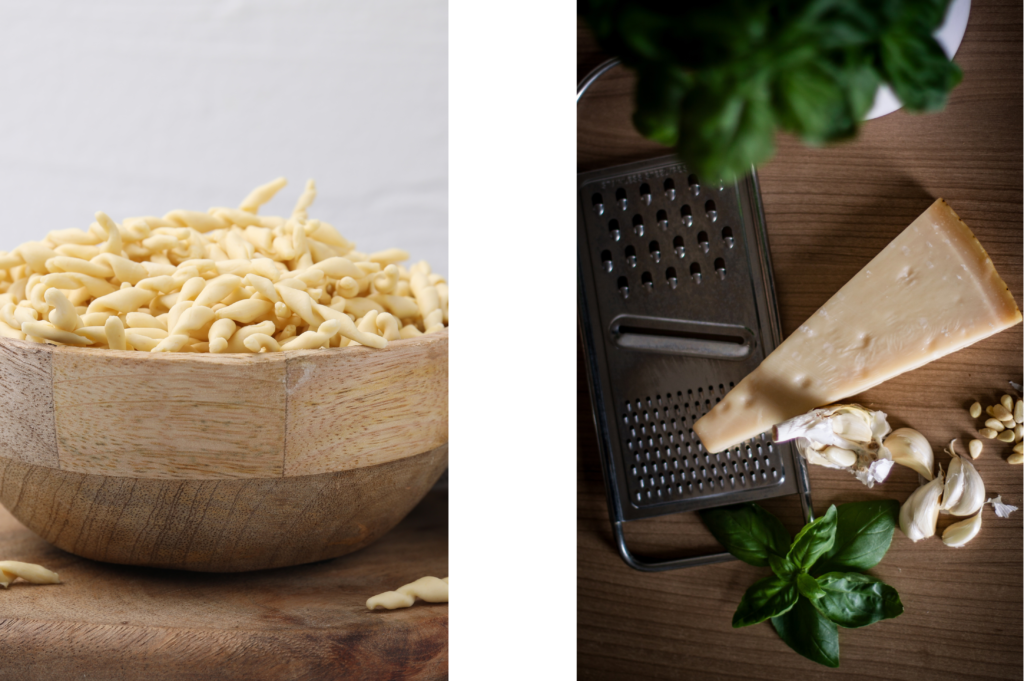Thou shalt have nothing more Ligurian than this
Pesto calls trofie, the favourite couple to share the table with. Also outside Liguria, of course.
Rich in flavour and aroma, pesto sauce is worldwide famous. It has a fascinating story going back centuries. It actually comes from the ancient Ligurian practice of mashing aromatic herbs in a mortar to enhance the taste of the simplest foods.
According to testimonies, it was born in XIX century: the first written recipe for pesto alla genovese (pesto Genoa style) appears about two centuries ago, but it somehow owes the idea to already existing sauces such as agliata (a Ligurian variation of the ancient garlic and walnuts sauce) and the French pistou. The genuine Genoa pesto features seven traditional ingredients: Pra’ basil (young basil leaves grown on the hills of Genoa district called Pra’), extra virgin olive oil from the Riviera (its taste is delicate and not excessively fruity), garlic, pine nuts, Parmigiano Reggiano cheese and Fiore Sardo (a kind of Pecorino cheese), coarse salt.
The name “pesto” comes from the act of crushing the ingredients in the mortar. Trofie are a fresh pasta kind, with a twisted, irregular shape and are traditionally seasoned with the famous Genoa pesto. Trofie originate in the territory facing Golfo Paradiso and including the municipalities of Sori, Avegno, Recco e Camogli. Exclusively handmade in the beginning, about 50 years ago a group of local merchants decided to extend their business and conquer Genoa, where the word “trofie” was used to mean a kind of gnocchi (potato dumplings). They therefore started a more massive production.
Trofie pasta succeeded and started to spread very quickly. After WWII, Recco became the gastronomic capital of Liguria di Levante (Eastern Riviera) and trofie pasta were renamed “trofiette di Recco”. The subsequent production of trofie as a dry pasta helped spread them internationally.

